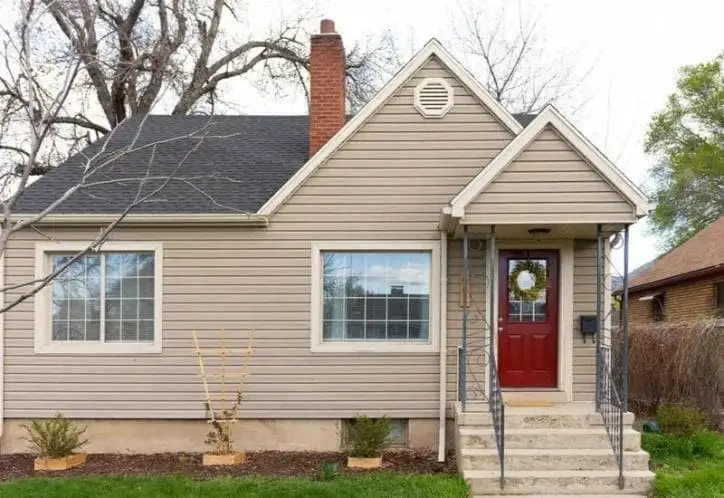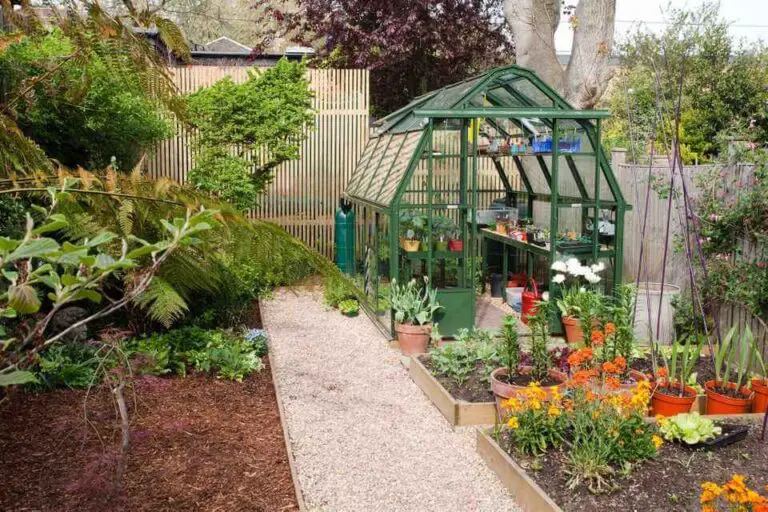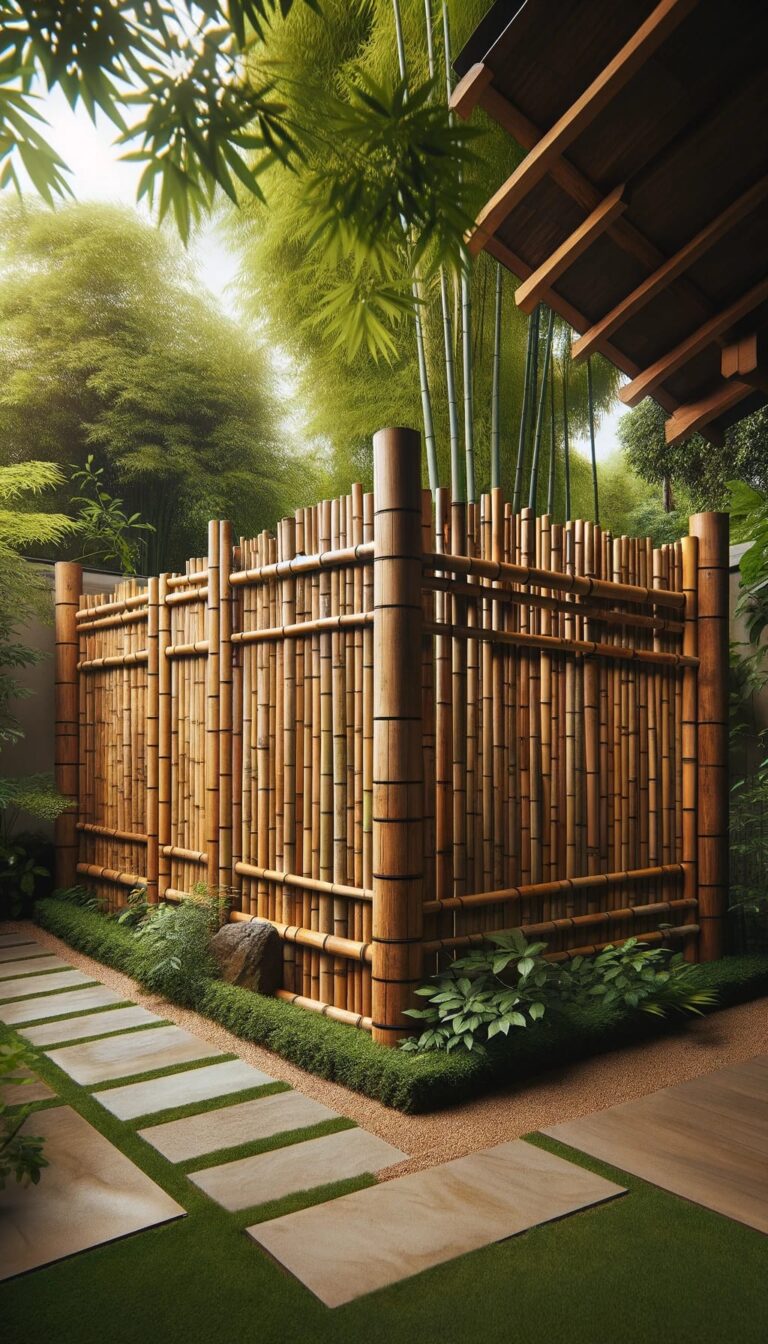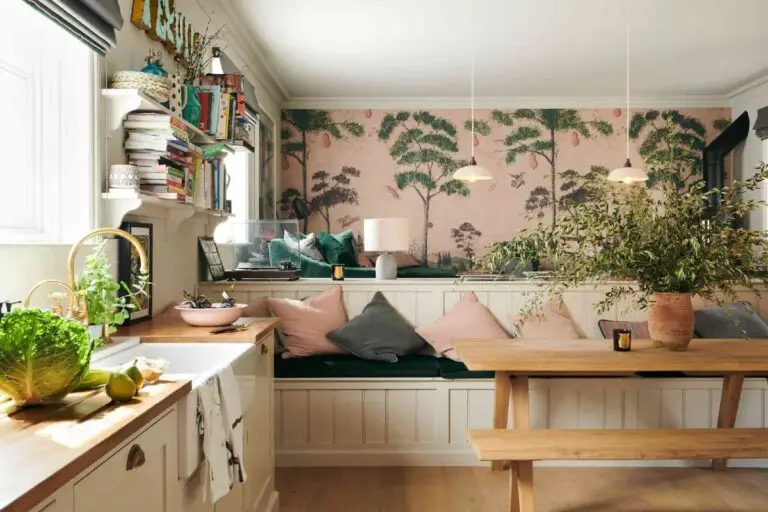31+ Creative Repurposed Garden Container Ideas On A Budget
Have you ever gazed upon an old item, only to envision a thriving garden waiting to burst forth? The phenomenon of repurposing gardening containers on a budget is not merely about saving money; it’s a creative odyssey that taps into the art of transformation. The benefits of utilizing repurposed containers for your green space are numerous – from reducing waste to imbuing your garden with a one-of-a-kind charm that can’t be replicated by commercial products.
This approach embodies sustainability, allowing you to transform old items into new homes for your plants without straining your wallet or the environment. As we delve into this article, we’ll uncover a plethora of innovative ideas that will inspire you to see potential planters in everyday objects, all while being kind to both your budget and the planet.
When exploring repurposing in gardening, it’s essential to understand its significance in waste reduction, the environmental impact of using repurposed materials for garden containers, and how this approach contributes to unique garden aesthetics. By preparing suitable materials, cleaning and preparing containers for planting, and considering safety precautions, you’ll be well-equipped to embark on a creative journey that will transform your outdoor space.
Some remarkable examples of repurposed container ideas include transforming old furniture pieces into planters, using kitchen items as hanging baskets or planters, and even repurposing bathroom fixtures like bathtubs and sinks. You can also breathe new life into footwear and clothing items by turning boots and shoes into quirky plant holders or denim pockets into wall-mounted planters.
When selecting plants for your repurposed containers, consider the size and depth of the container, as well as the sunlight and water requirements. Companion planting in larger containers can add an extra layer of complexity to your garden design, while adding DIY drip irrigation systems and decorative touches can further enhance your outdoor space.
To maintain and care for your repurposed container gardens, regular watering and fertilization are crucial, along with monitoring for pests and diseases. Seasonal care and overwintering strategies will also be essential in ensuring the long-term health of your plants.
Understanding Repurposing in Gardening
Definition of Repurposing and Its Importance in Waste Reduction
Repurposing involves transforming an object that has fulfilled its original purpose into something anew, giving it a second chance at life. In the realm of gardening, this concept can manifest as repurposing an old bucket into a planter or a pallet into a thriving vertical garden. The impact of repurposing on waste reduction is profound, as it empowers individuals to actively contribute to minimizing landfill waste by reusing materials instead of discarding them.
This practice not only preserves resources and reduces the likelihood of items ending up in landfills but also decreases the demand for new resources required to produce alternative garden containers.
The Environmental Impact of Repurposing Materials for Garden Containers
Harnessing the power of creative reuse in your garden can have a profound impact on the environment. By opting for repurposed containers instead of manufacturing new ones, you’re significantly reducing your carbon footprint. This eco-friendly approach eliminates the need for fossil fuels and minimizes greenhouse gas emissions, ultimately preserving natural resources and conserving energy.
Furthermore, repurposing encourages creative problem-solving and innovation, as you reimagine discarded items into functional and beautiful garden features. The benefits of repurposing extend beyond environmental sustainability, as it also fosters a sense of resourcefulness and community engagement.
How Repurposing Contributes to Unique Garden Aesthetics
What sets repurposed garden containers apart from their store-bought counterparts is the distinctive character they bring to your outdoor space. Each item has its own unique story and charm, allowing you to create a truly personalized aesthetic that reflects your individuality.
The beauty of this approach lies in its ability to transform everyday objects into functional and beautiful plant homes, imbuing your garden with an eclectic and whimsical charm that showcases your creativity and resourcefulness. As you repurpose items, you’re not only contributing to sustainability but also crafting a visual feast that celebrates innovation and the art of transformation.
Preparing for Repurposing
Selecting Suitable Materials for Repurposing
When it comes to repurposing materials for planters, selecting sturdy items that can withstand the elements and hold soil is paramount. To ensure a healthy growing environment, it’s essential to steer clear of materials that are prone to decay or may leach harmful substances into the soil. Instead, opt for durable options like wood, metal, and certain plastics, which can provide a suitable home for your plants.
When choosing a material, consider the size and shape in relation to the type of plants you want to grow. Some plants require deeper containers, while others thrive in shallow ones.
Cleaning and Preparing Containers for Planting
Before you start planting, it’s crucial to prepare your containers by removing any dirt, debris or residue that may harm your plants. If you’re repurposing containers that previously held chemicals or food, give them a thorough cleaning with soap and water. For wooden containers, inspect for any splinters or rough edges that need attention – sanding is usually the solution. Additionally, drill holes in the bottom of your container if it’s not already equipped with drainage holes.
Proper drainage is vital for plant health, as excess water can cause root rot and other issues. By taking these simple steps, you’ll be creating a healthy environment for your plants to thrive.
Safety Considerations When Repurposing Containers
When it comes to repurposing containers for gardening, prioritizing safety is crucial. Be mindful of materials that may be prone to breaking or rusting, such as glass or certain metals, which could pose hazards to both yourself and your plants. Furthermore, consider the original use of the container – it’s generally best to avoid repurposing vessels that previously housed toxic substances. To mitigate risks, always wear protective gear like gloves and safety glasses when modifying containers.
By taking these precautions, you can create a safe and welcoming garden space for everyone involved.
Creative Repurposed Container Ideas
Old Furniture Pieces
When it comes to infusing your garden with a touch of uniqueness, old furniture can be a treasure trove of creative possibilities. By repurposing these items, you can transform them into functional and visually appealing elements that add depth and character to your outdoor space.
Dresser drawers, for instance, make excellent planters. Their dimensions are well-suited for most plants, providing ample room for growth while also offering a stylish display.
To convert a drawer into a planter, start by cleaning it thoroughly and removing any contaminants that might harm your plants. If the wood is not naturally weather-resistant, consider treating it to prevent rot. Next, drill drainage holes in the bottom to ensure excess water doesn’t accumulate and cause root rot.
Stacking multiple drawers at different heights can create a striking multi-tiered garden effect, which not only saves space but also adds visual interest.
This approach allows you to showcase a variety of plants while maintaining a sense of harmony and balance in your garden.
Bed frames, typically made of metal or solid wood, can be repurposed into sturdy trellises that provide essential support for climbing plants like ivy, roses, cucumbers, and beans. To transform a bed frame into a trellis, remove any parts that aren’t necessary or might hinder plant growth. Ensure the frame is stable when placed on the ground or against a wall.
The slats or bars of the frame will provide perfect support for plants to weave through as they grow, creating a visually appealing display that also maximizes space in your garden.
Kitchen Items
When it comes to repurposing old kitchen items, the possibilities are endless. What was once destined for the scrap heap can become a charming addition to your garden or indoor space. One such example is colanders, which can be transformed into functional and attractive hanging baskets. The numerous holes in these everyday kitchenware staples provide excellent drainage, ensuring that the roots of your plants aren’t overwatered.
To give them new life, simply attach chains or sturdy rope to three equidistant points on the rim, forming a hanger that allows for ample air circulation and drainage. Another creative reuse is old teapots and coffee cans, which can be repurposed as vintage-style herb containers. Perfect for growing herbs on a kitchen windowsill or balcony, these mini planters are easily accessible and require minimal maintenance.
Before planting, make sure to thoroughly clean them and create drainage holes if necessary. With a bit of TLC, you can even customize their appearance by painting or decorating them to match your decor. The possibilities are endless when it comes to breathing new life into old kitchen items. Whether it’s a colander turned hanging basket or an old teapot repurposed as a herb planter, the result is a delightful addition to any space that adds a touch of homeliness and nostalgia.
Bathroom Fixtures
Innovative uses for bathroom fixtures can breathe new life into your garden. The durable materials and spacious designs of these once-useful items make them ideal candidates for repurposing into unique planters and raised garden beds that can become a statement piece in any outdoor space. For instance, bathtubs can be transformed into elevated raised garden beds that provide ample room for a variety of plants, including deep-rooted vegetables and flowers.
To give your old bathtub a new lease on life, start by ensuring it’s clean and free from any residue. If necessary, drill additional drainage holes to prevent waterlogging. Position the bathtub in a sunny spot in your garden, then fill it with a mixture of soil and compost to create a nutrient-rich environment for your plants.
The benefits of using bathtubs as raised garden beds are twofold – they’re not only functional but also reduce the strain on your back, making gardening more accessible and enjoyable. On the other hand, sinks can be repurposed into elegant succulent gardens that require minimal soil and water. Ensure proper drainage by confirming the sink’s drain is clear or by drilling additional holes.
Fill the sink with a well-draining soil mix designed for cacti and succulents, then plant a variety of succulents for a diverse display. These repurposed sink gardens can serve as a focal point on a patio or add a touch of greenery to a balcony. By giving your old bathroom fixtures a new purpose in the garden, you’ll not only reduce waste but also create a unique and functional space that’s sure to impress.
Footwear and Clothing
Revamping worn-out footwear and apparel into planters injects a dash of creativity and whimsy into gardening, transforming discarded items into functional and environmentally conscious containers. Not only does this approach add a playful touch to your outdoor space, but it also prolongs the life cycle of these materials in a sustainable manner.
Boots and Shoes as Quirky Plant Holders
Transforming discarded boots and shoes into unique plant holders is an innovative way to breathe new life into old materials. The diverse designs and textures of these repurposed planters can add a playful and eclectic charm to any garden space. To prepare the footwear for planting, begin by thoroughly cleaning it and creating drainage holes in the soles to prevent waterlogged soil.
Next, fill the boots or shoes with potting mix and add small plants such as succulents, annuals, or herbs that thrive in container environments. These creative plant holders can be strategically placed along garden paths, on steps, or even hung from a fence to infuse your outdoor space with personality.
Denim Pockets for Wall-Mounted Planters
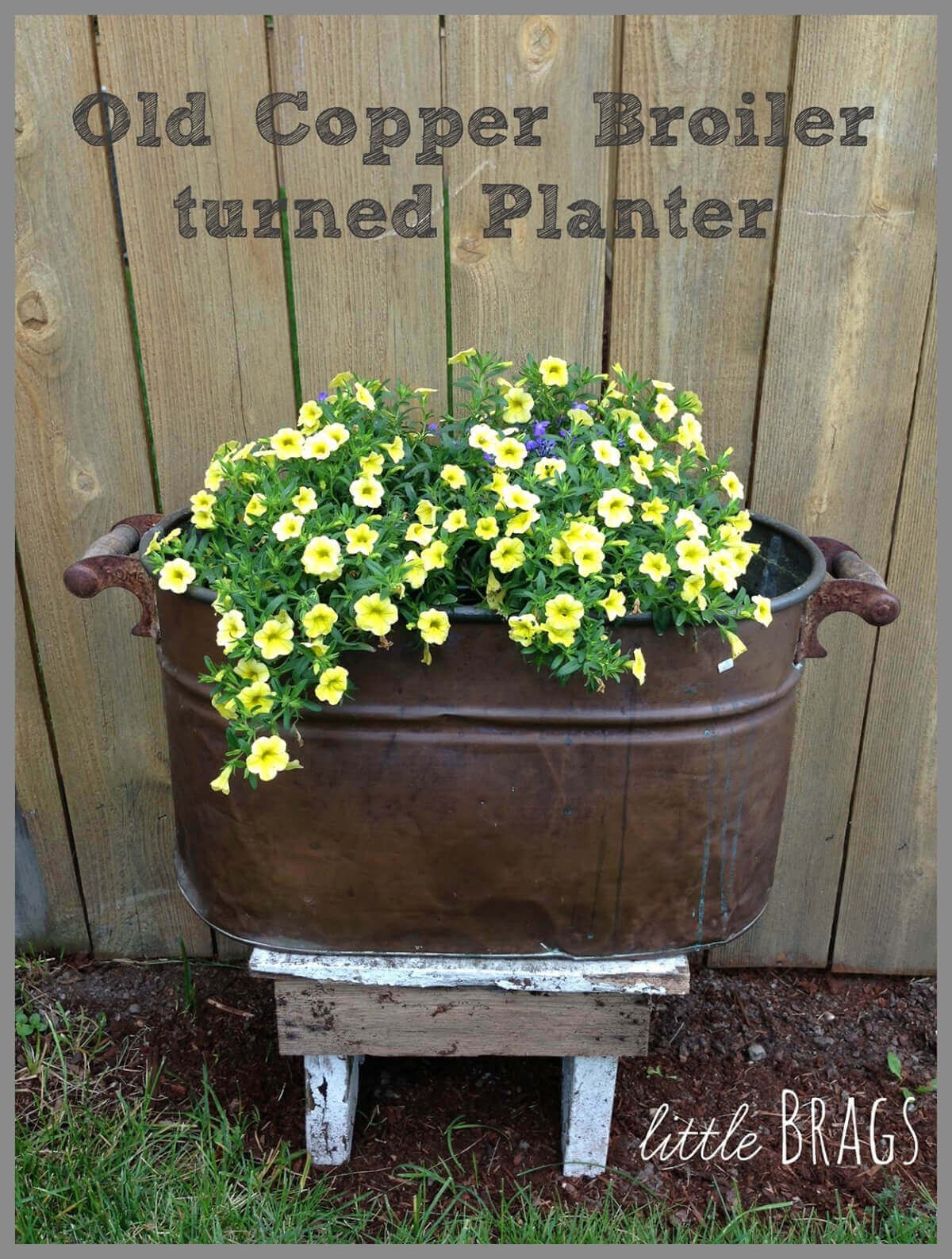
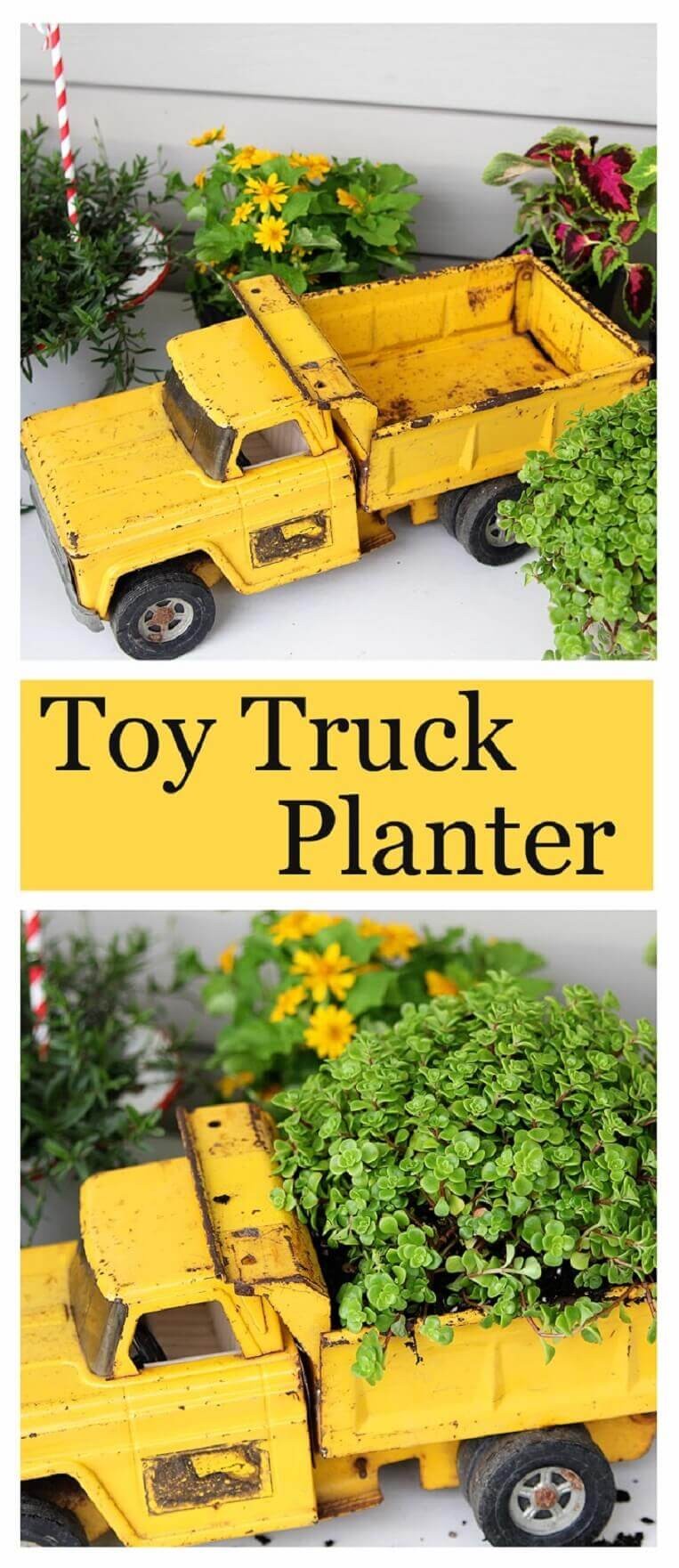
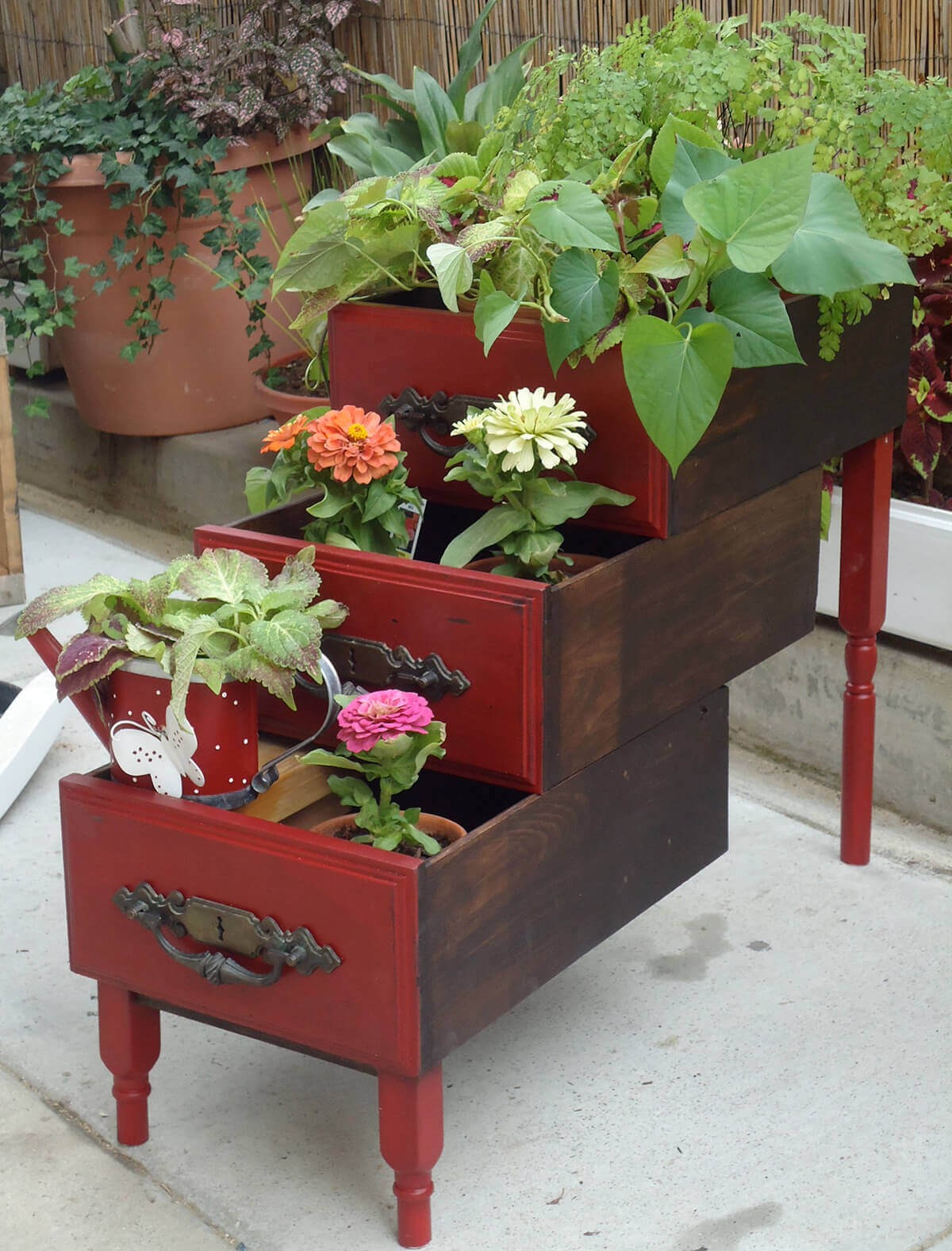
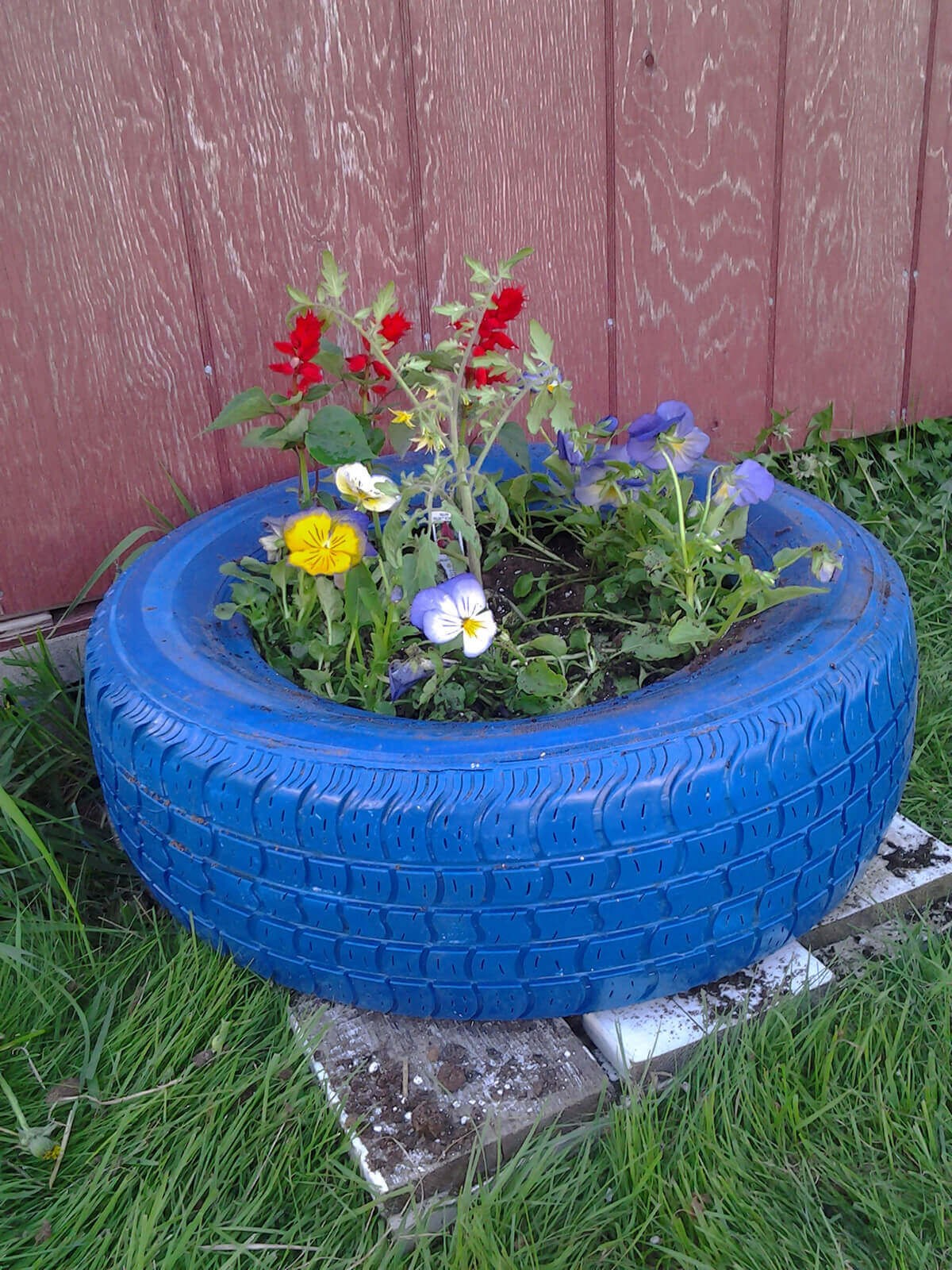
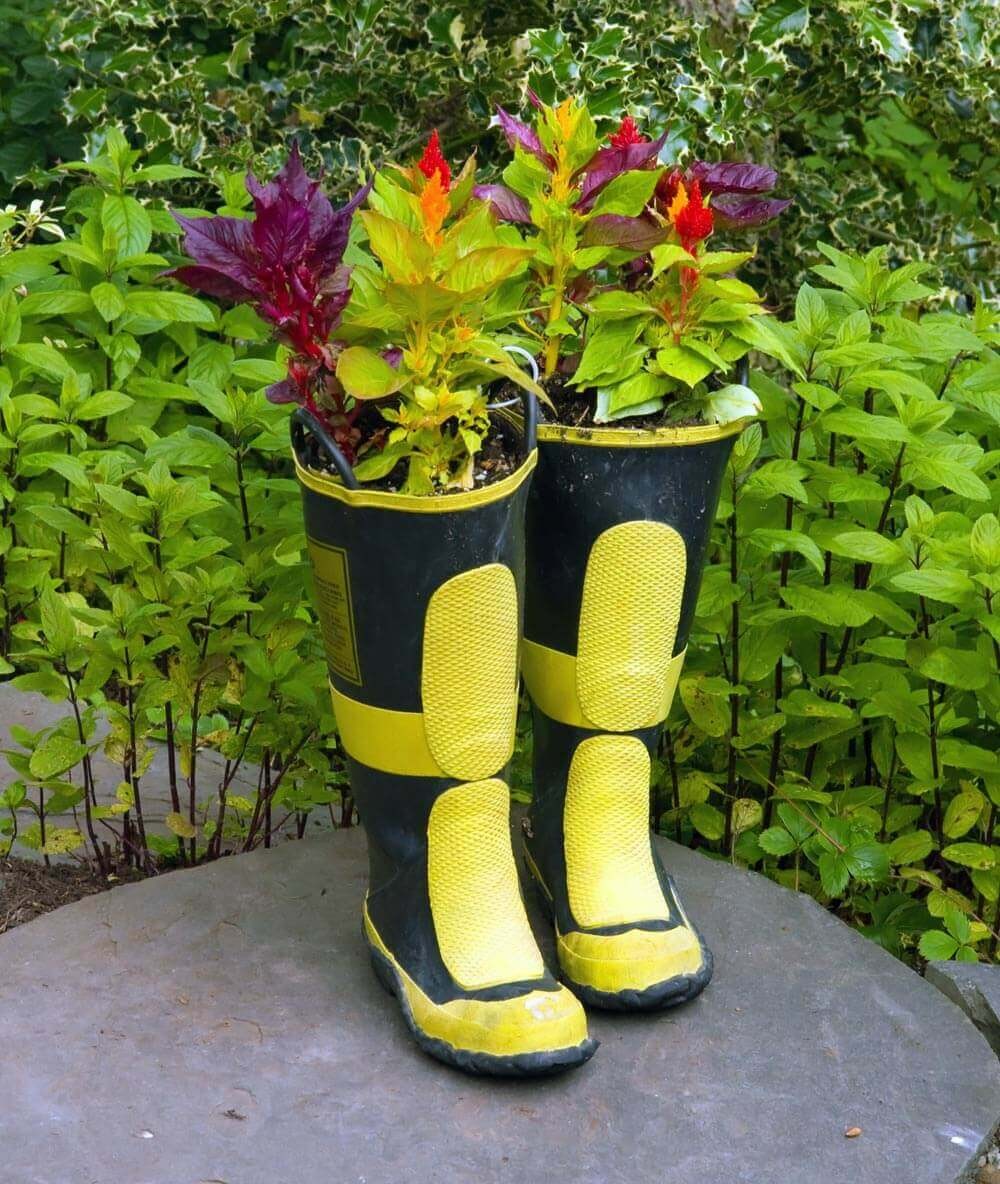
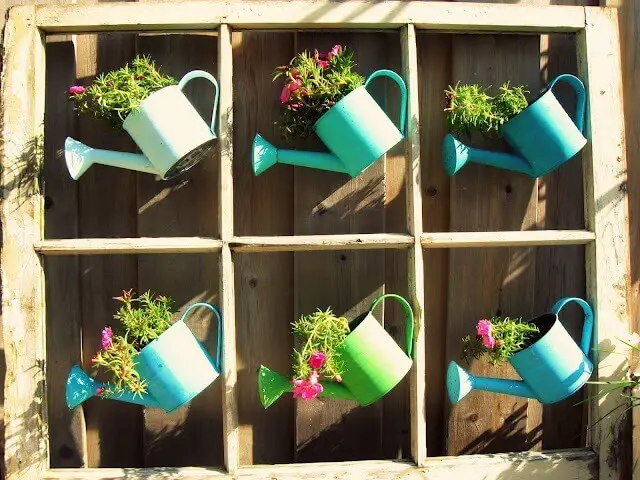
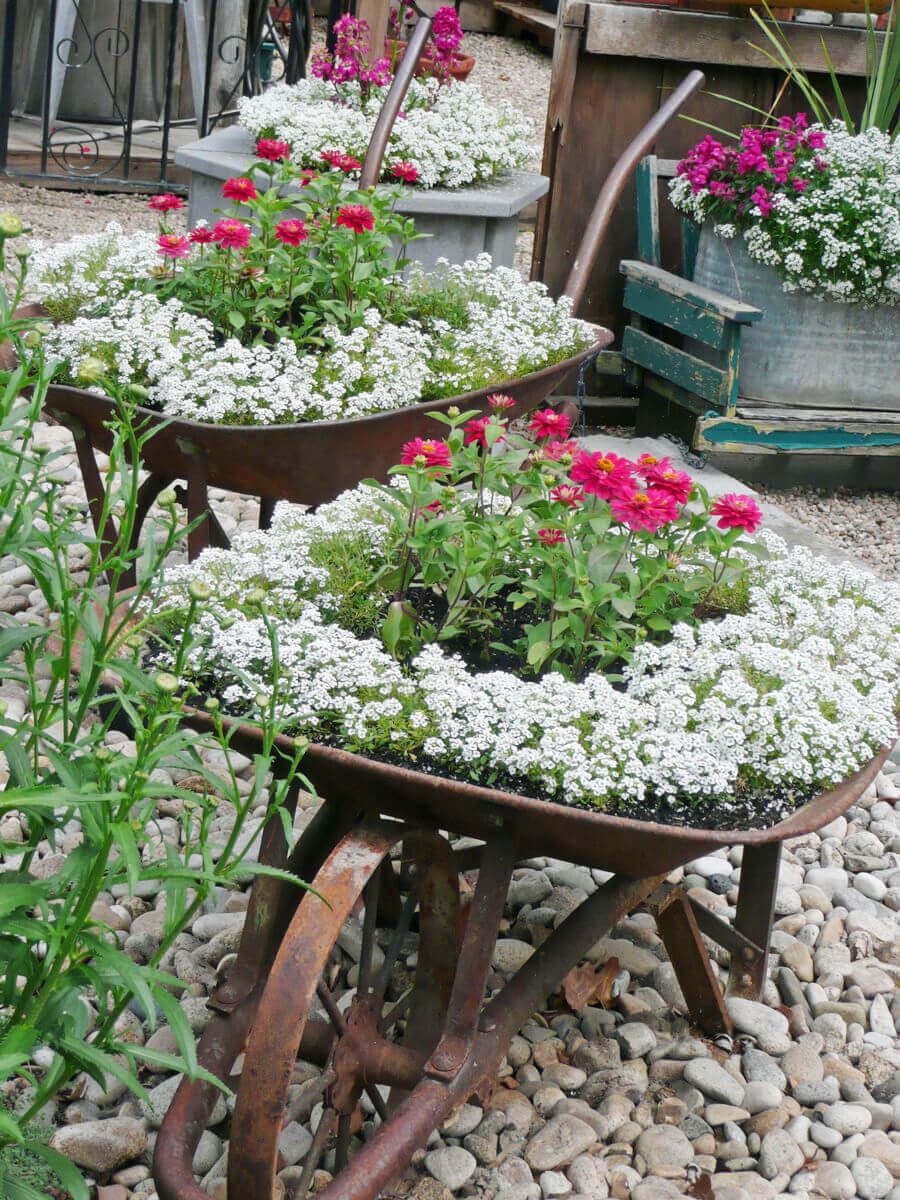
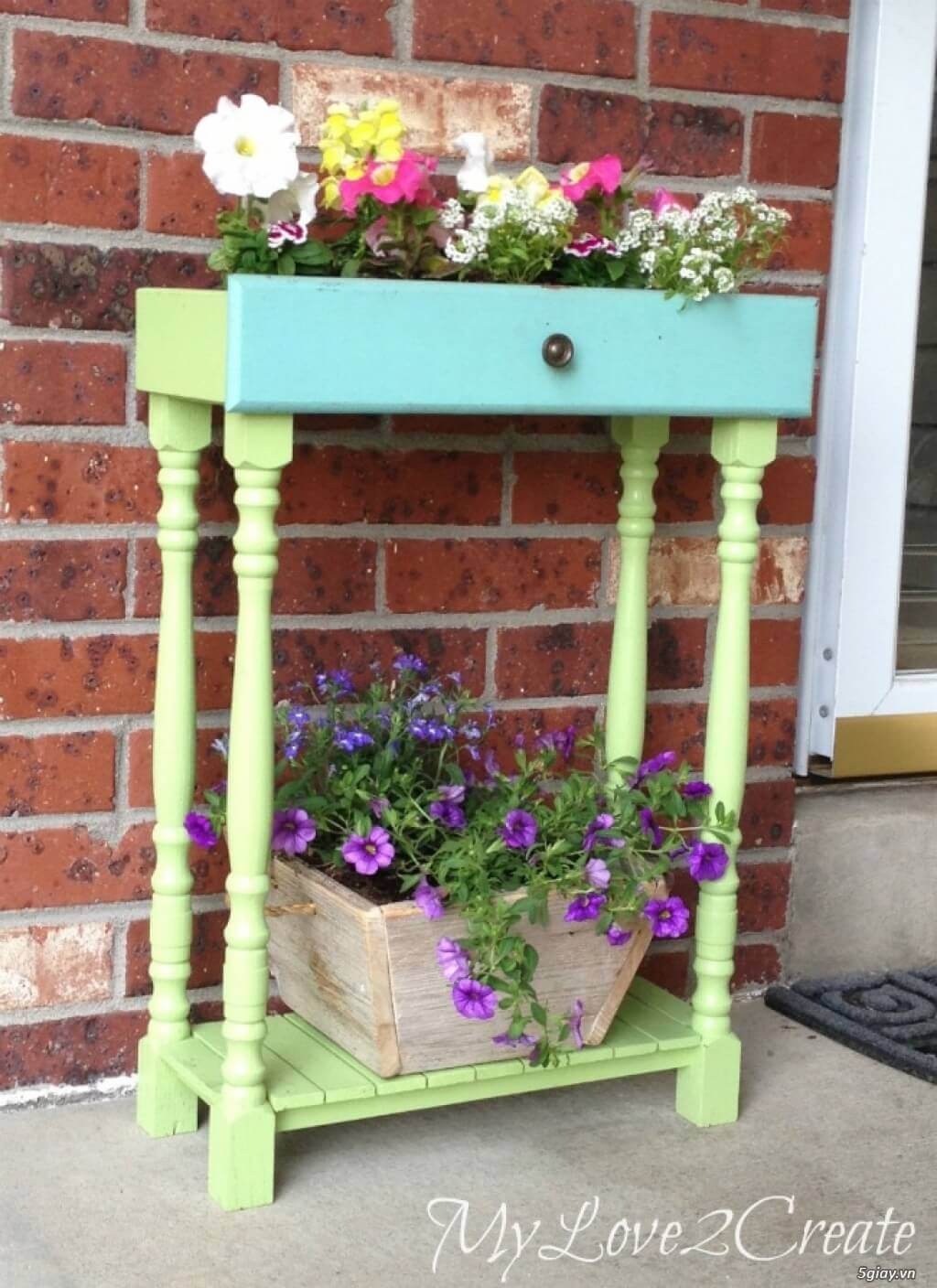
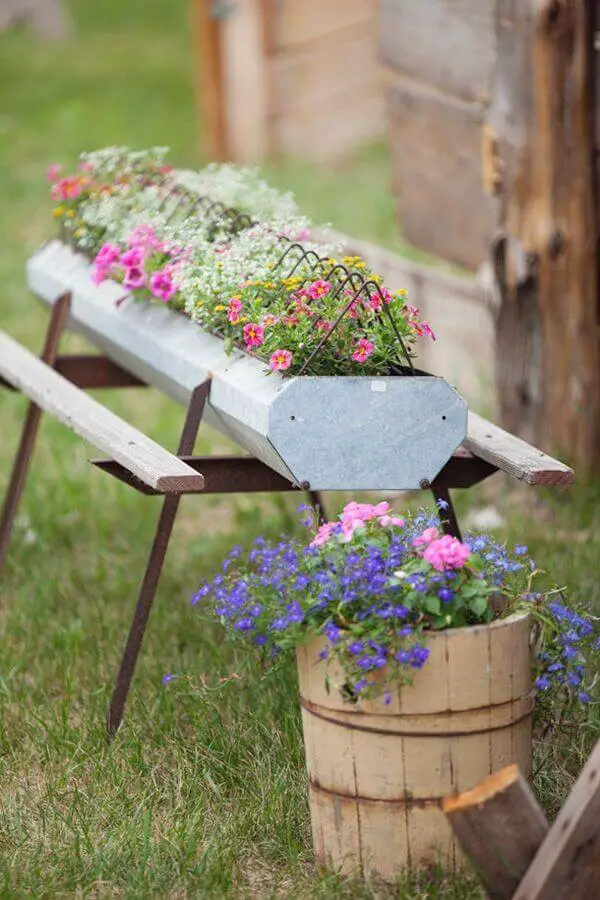
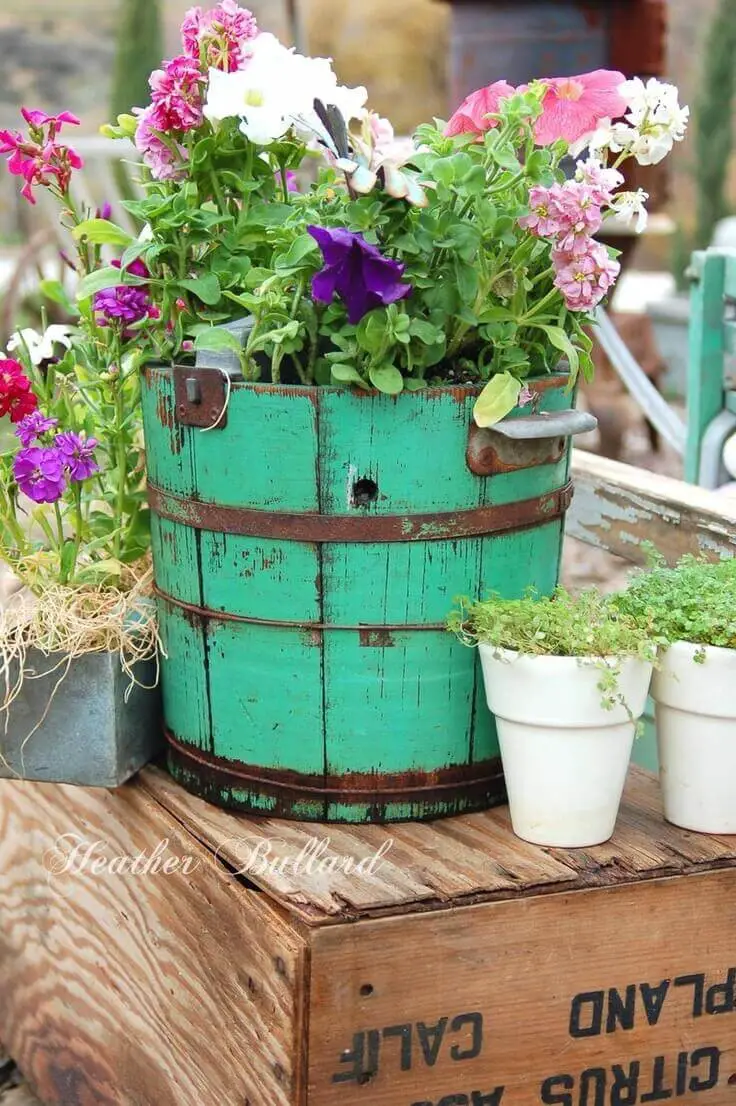
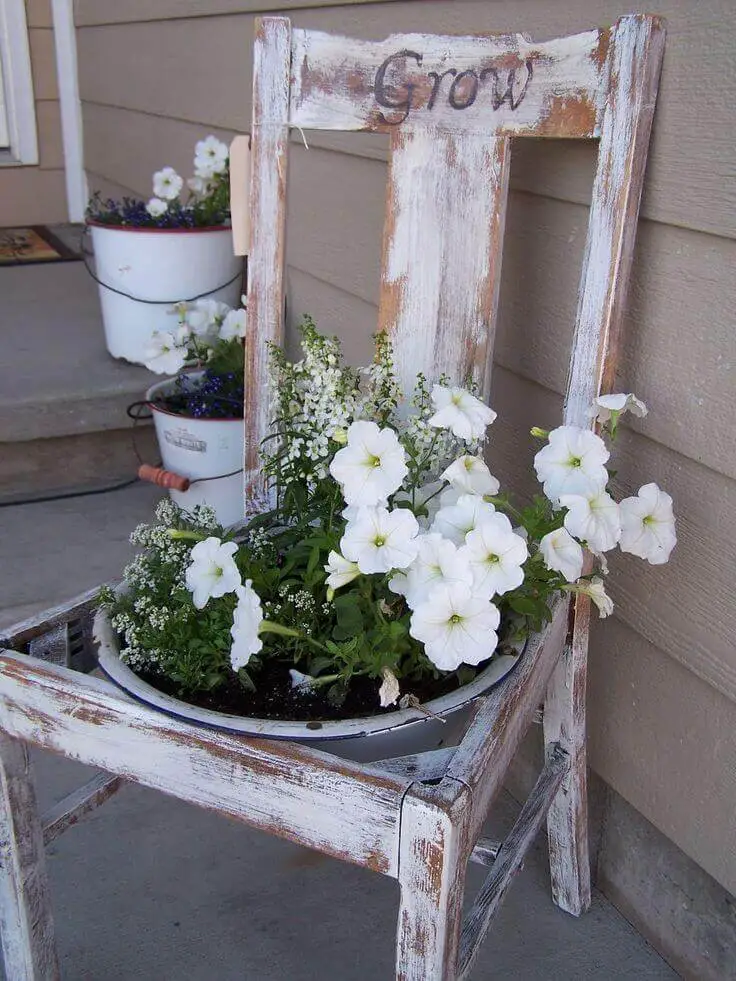
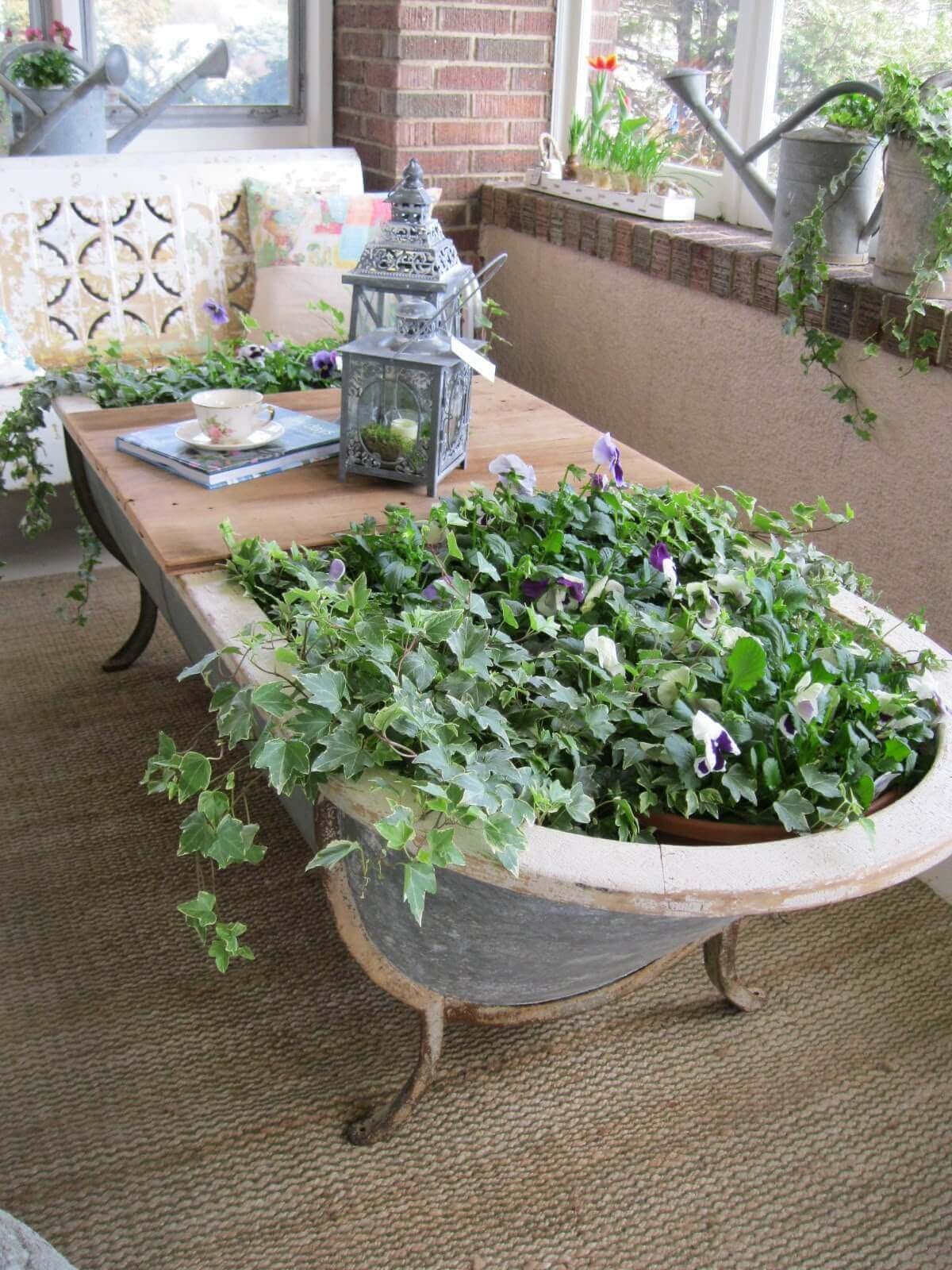
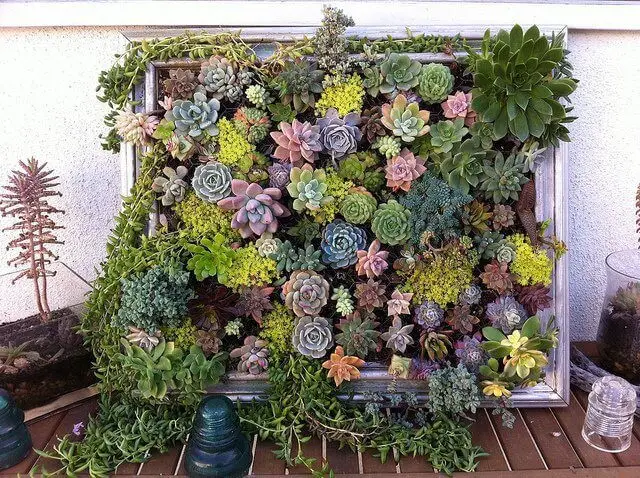
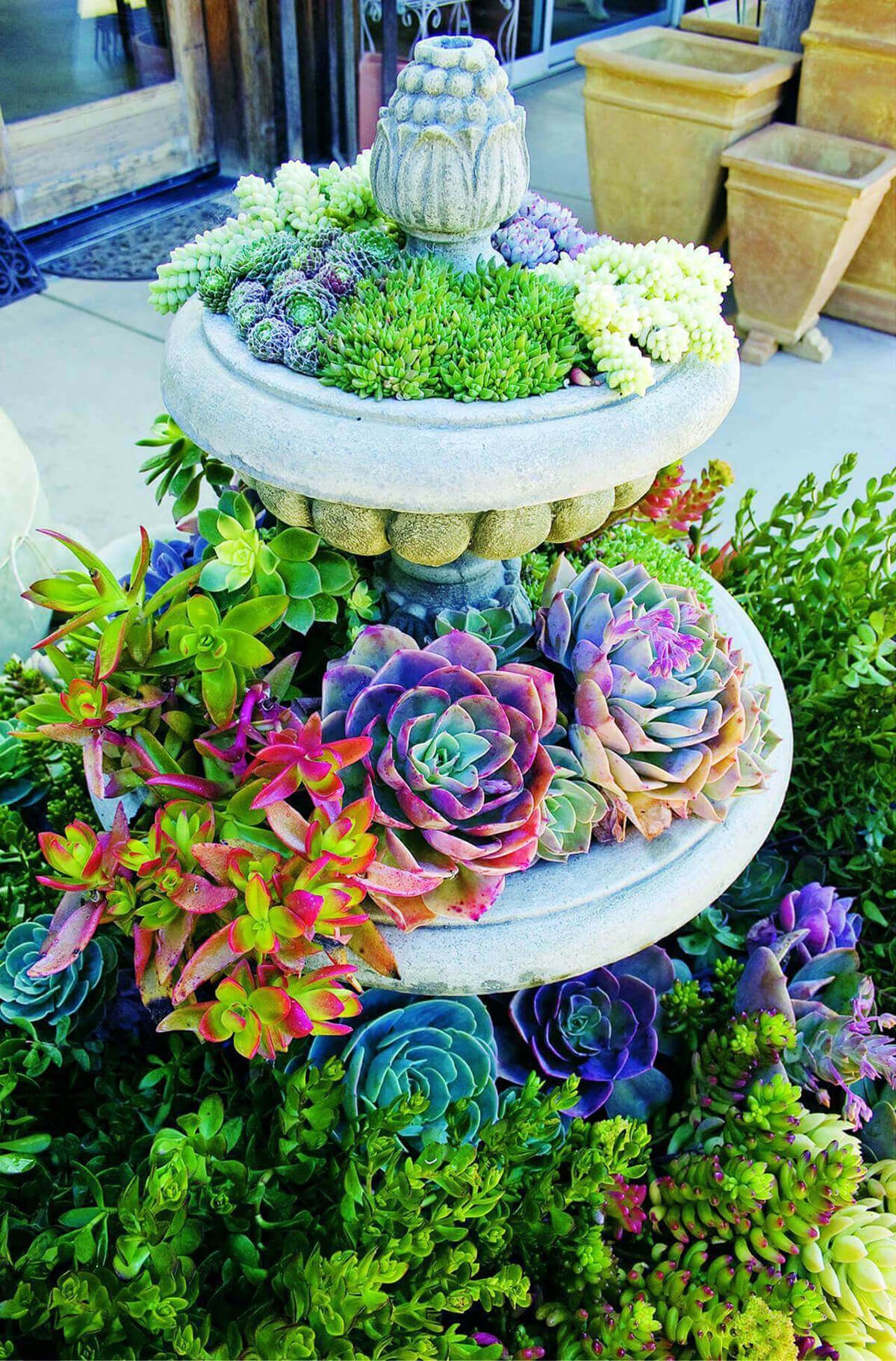
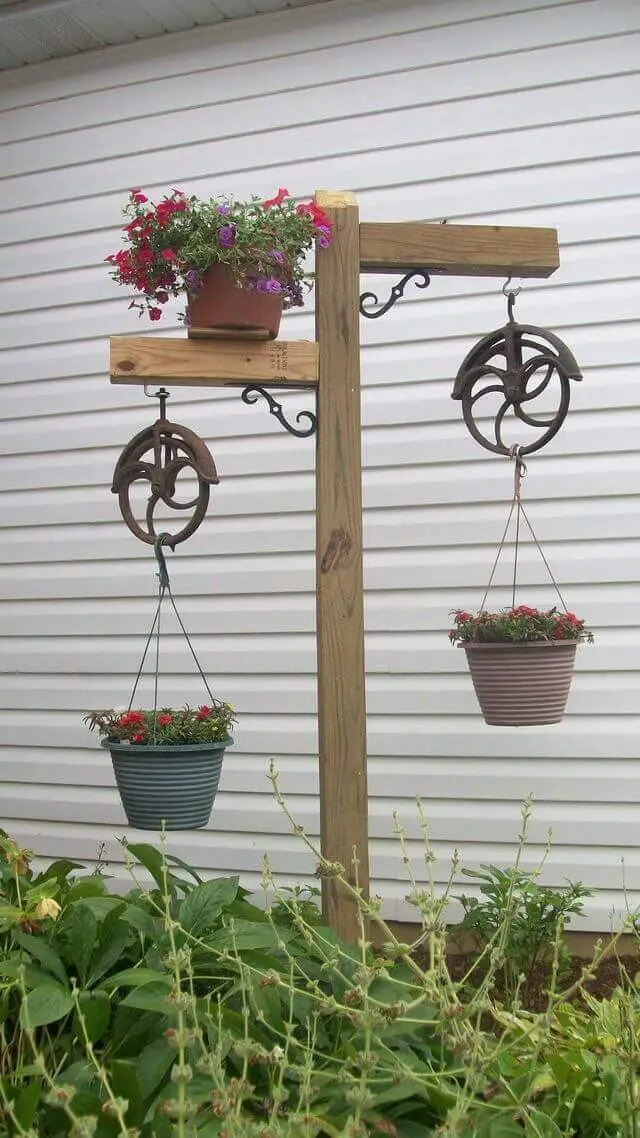

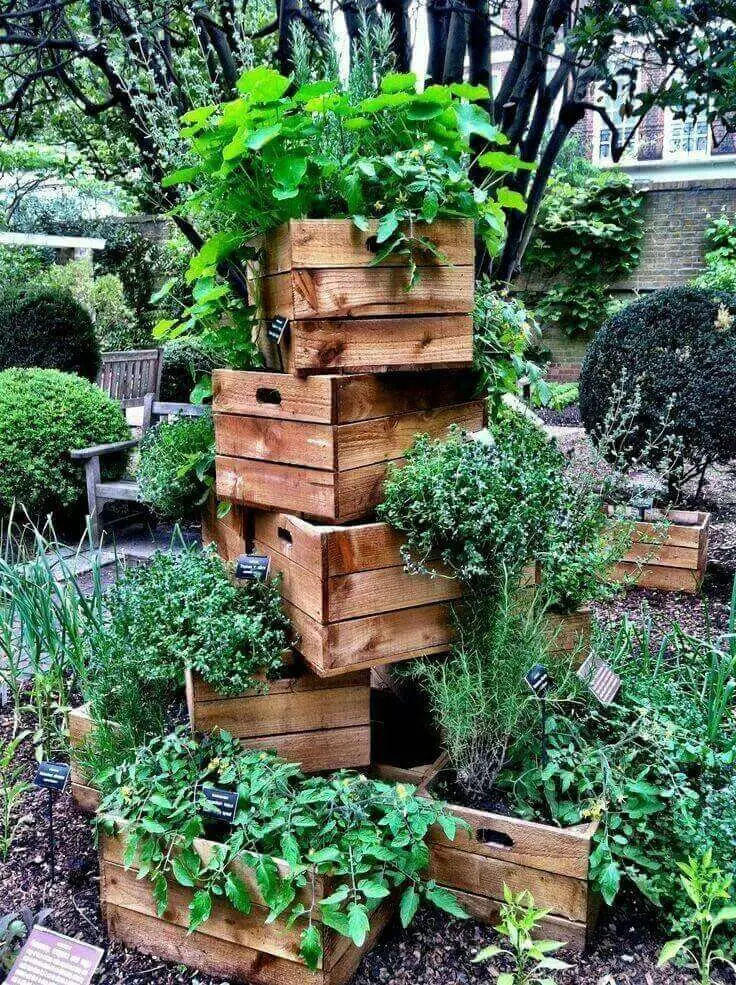
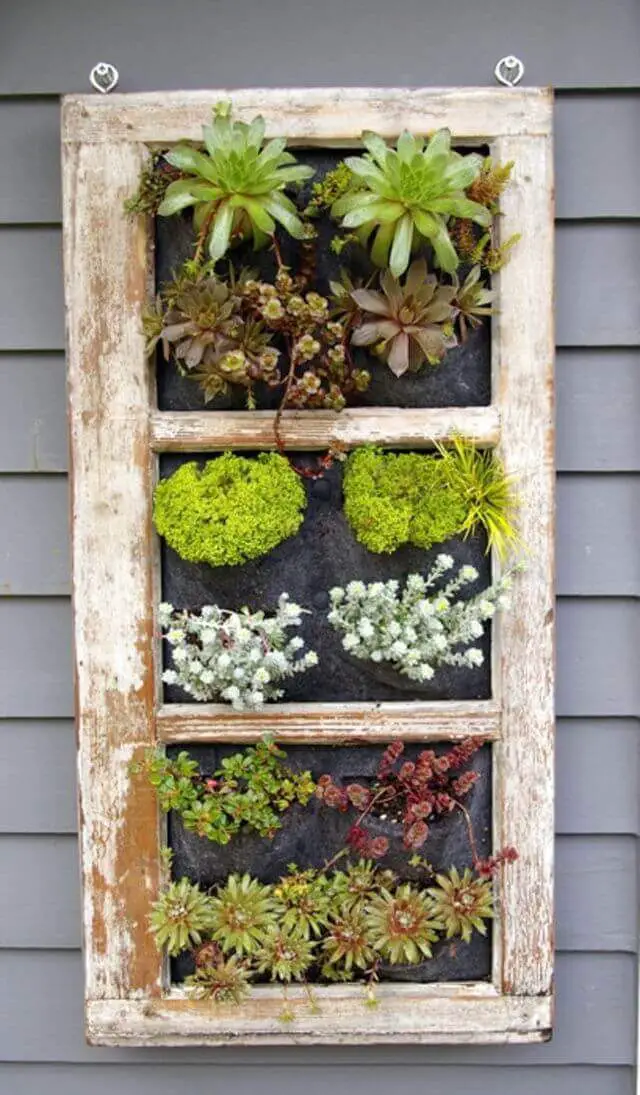
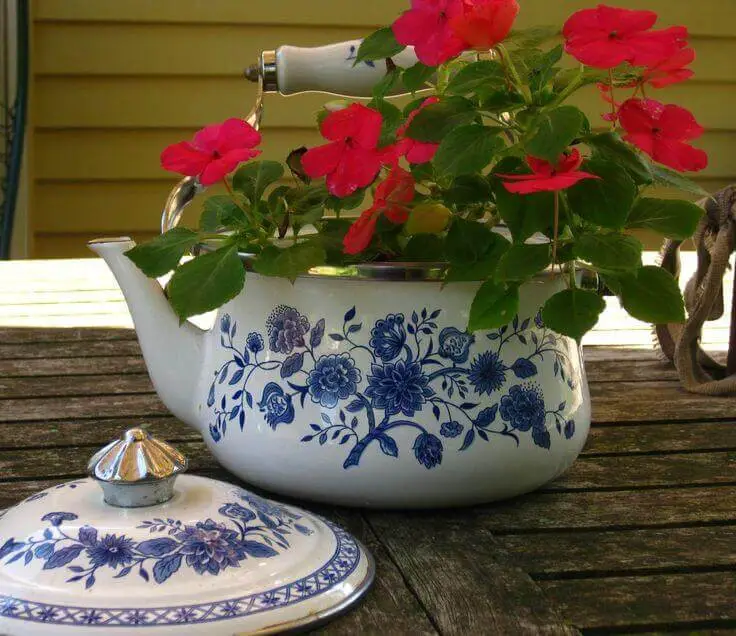
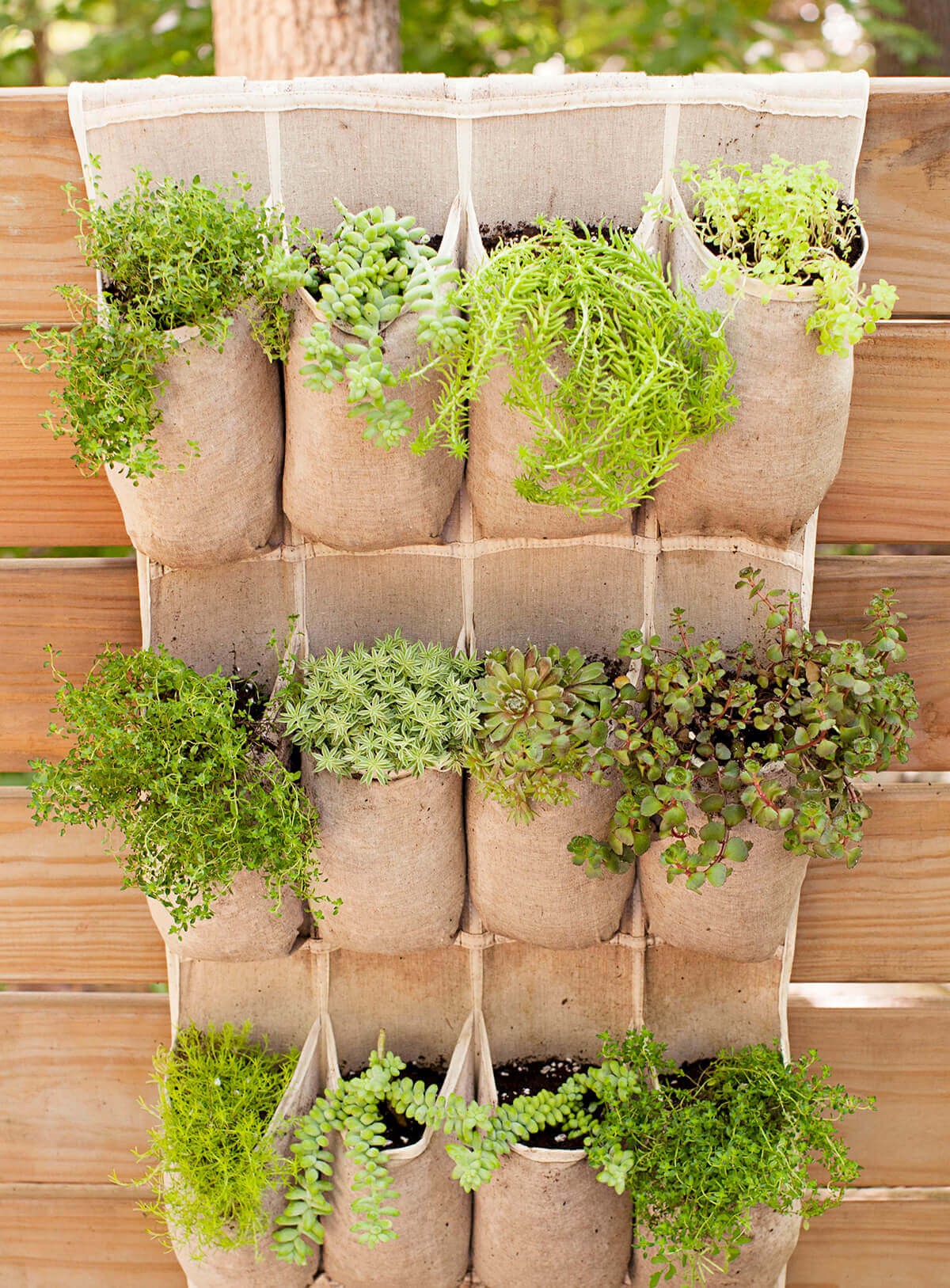
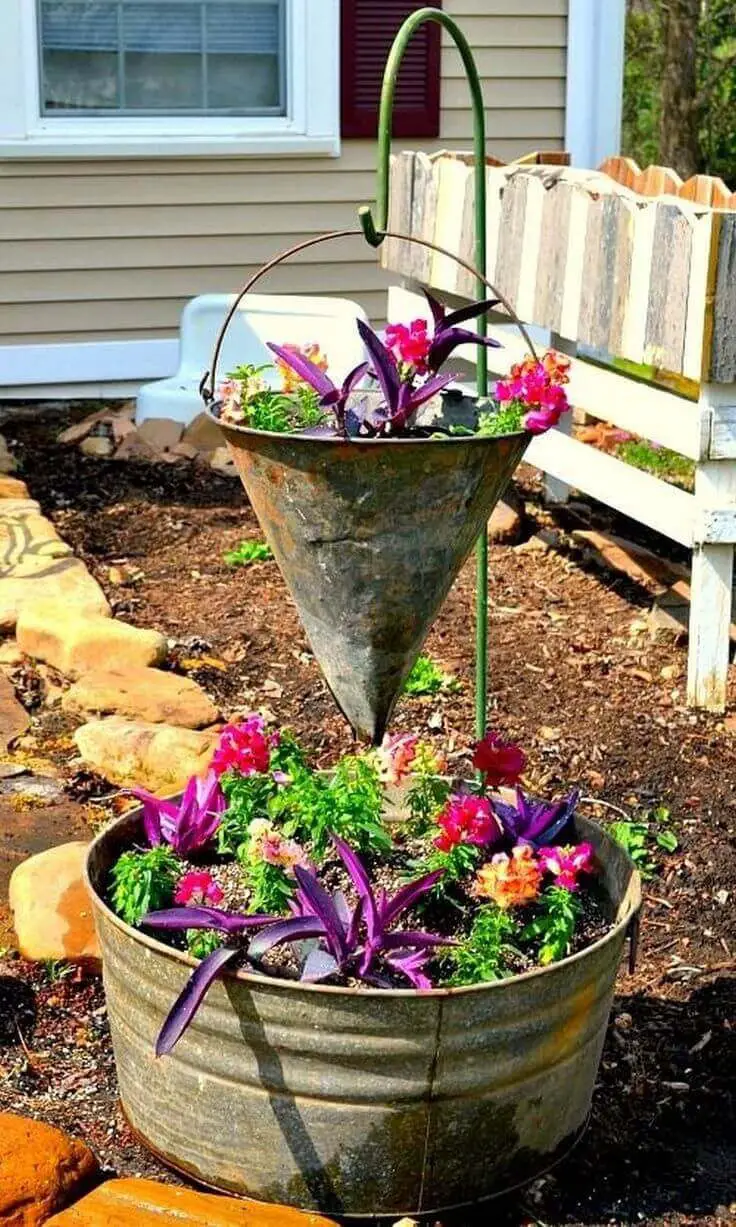
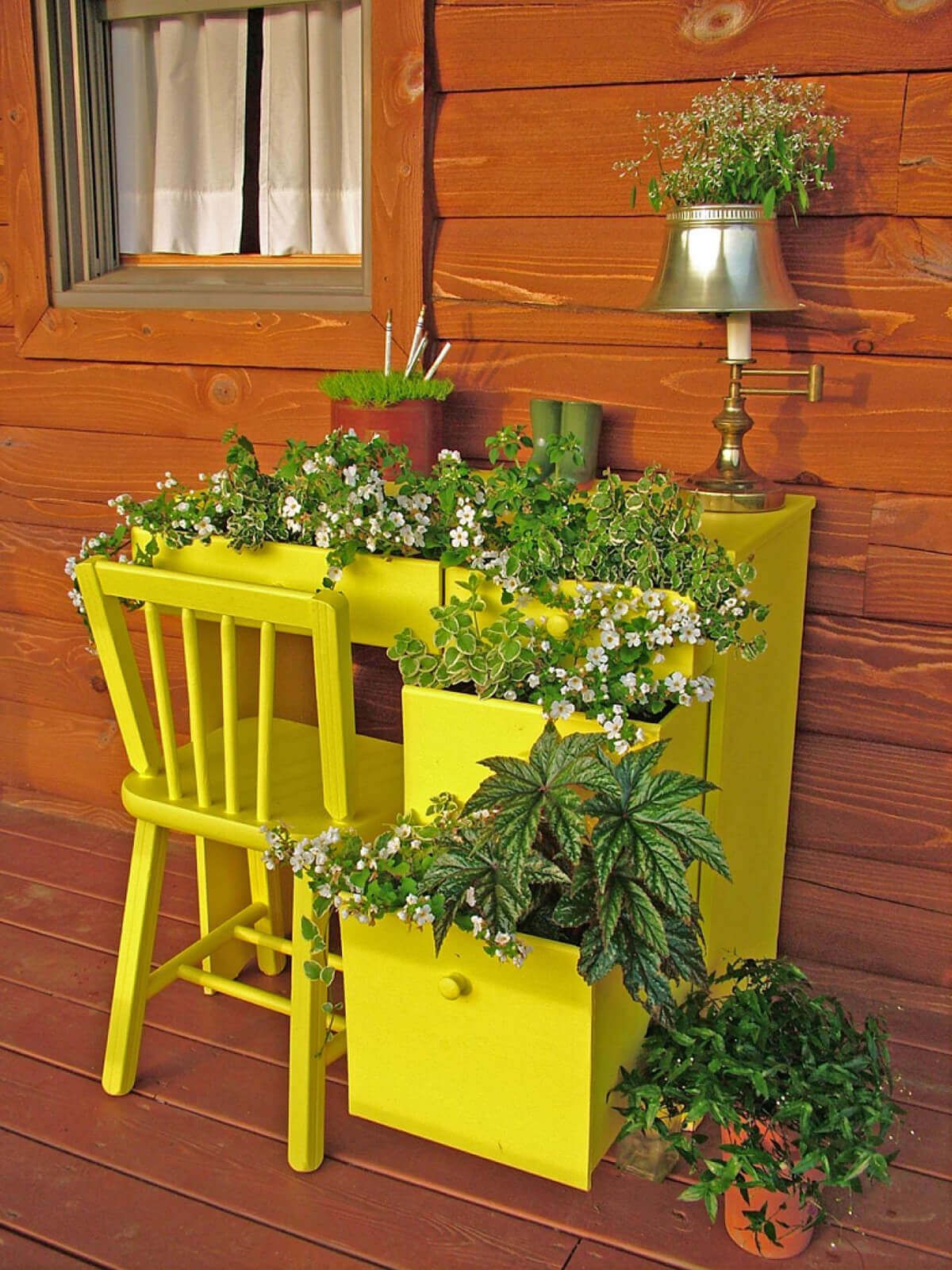
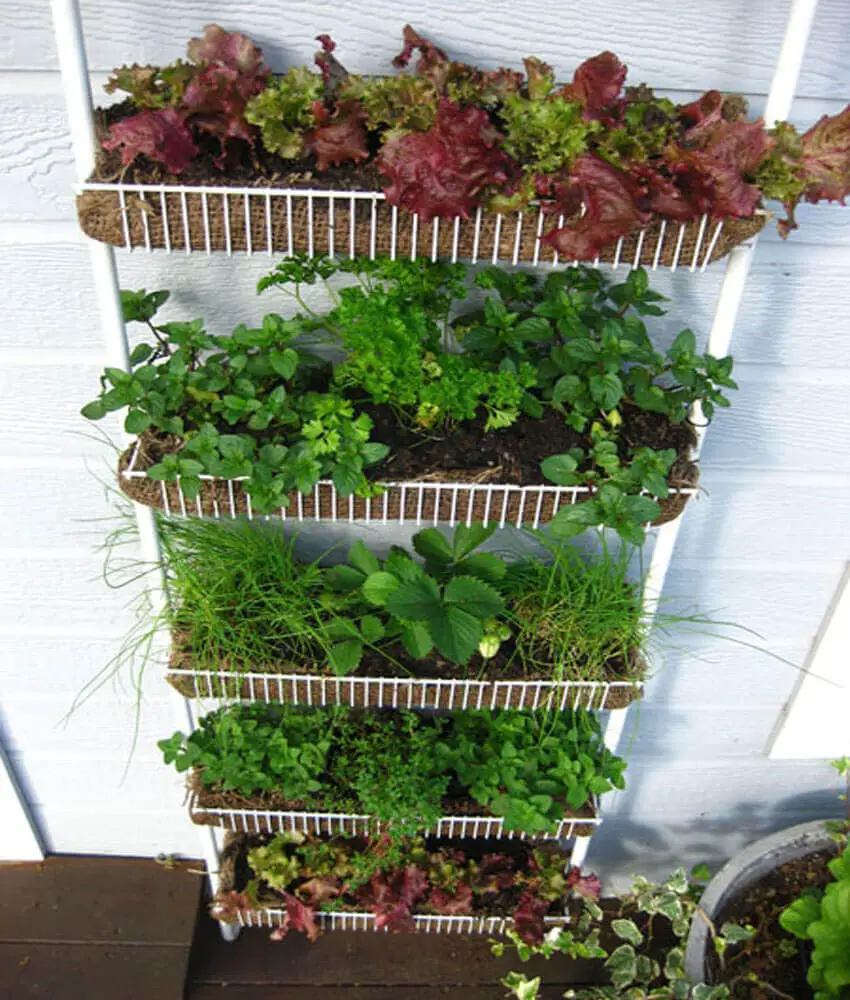
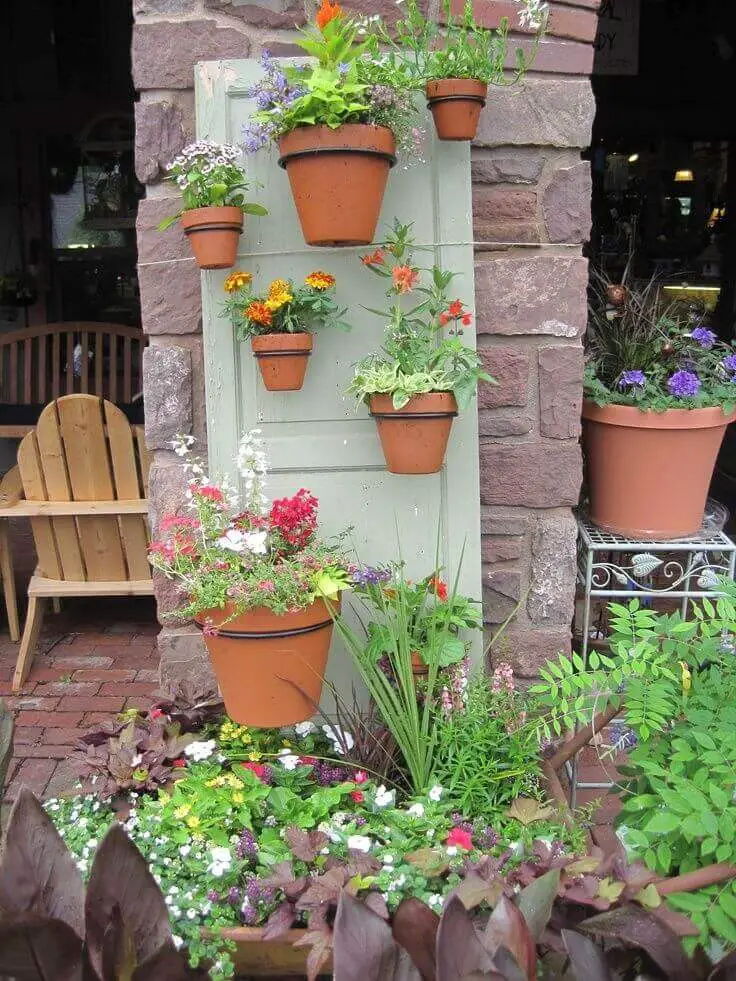
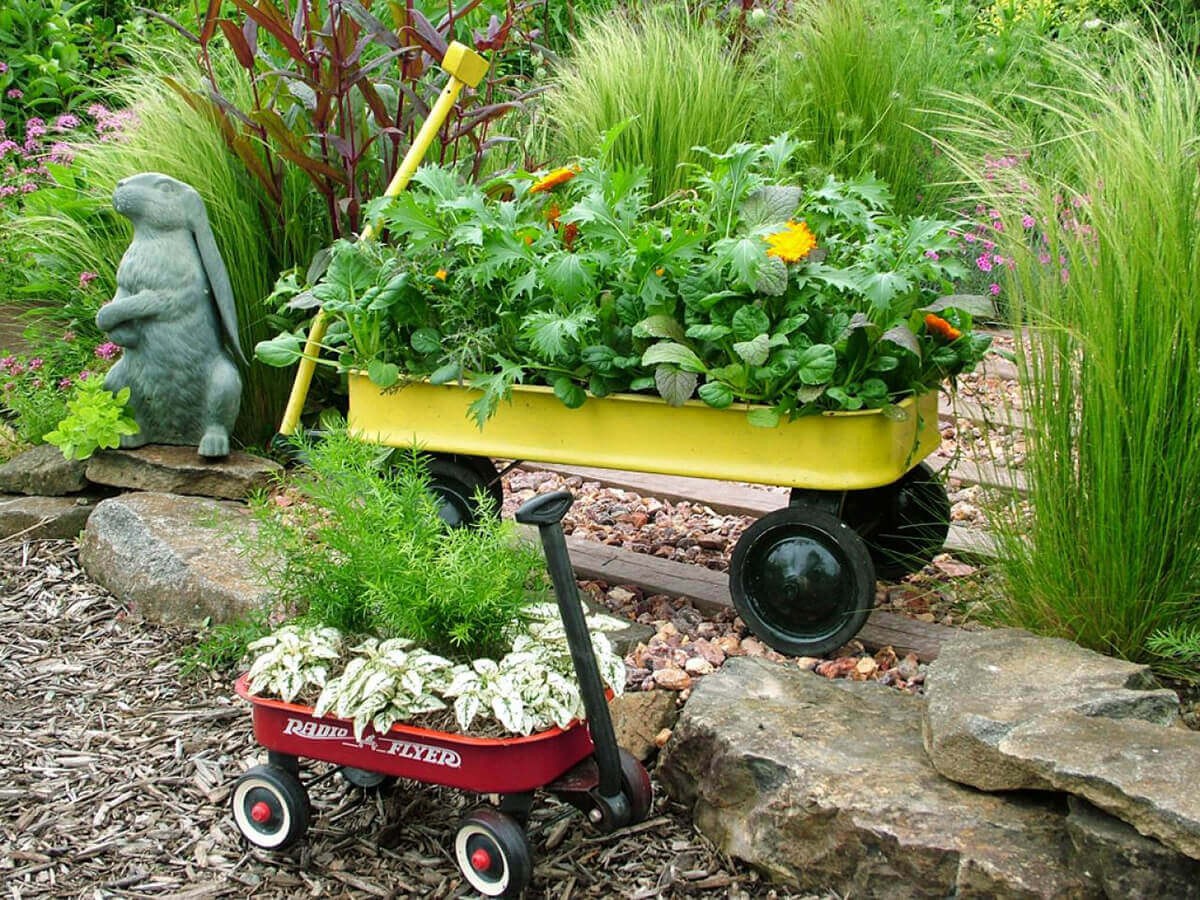
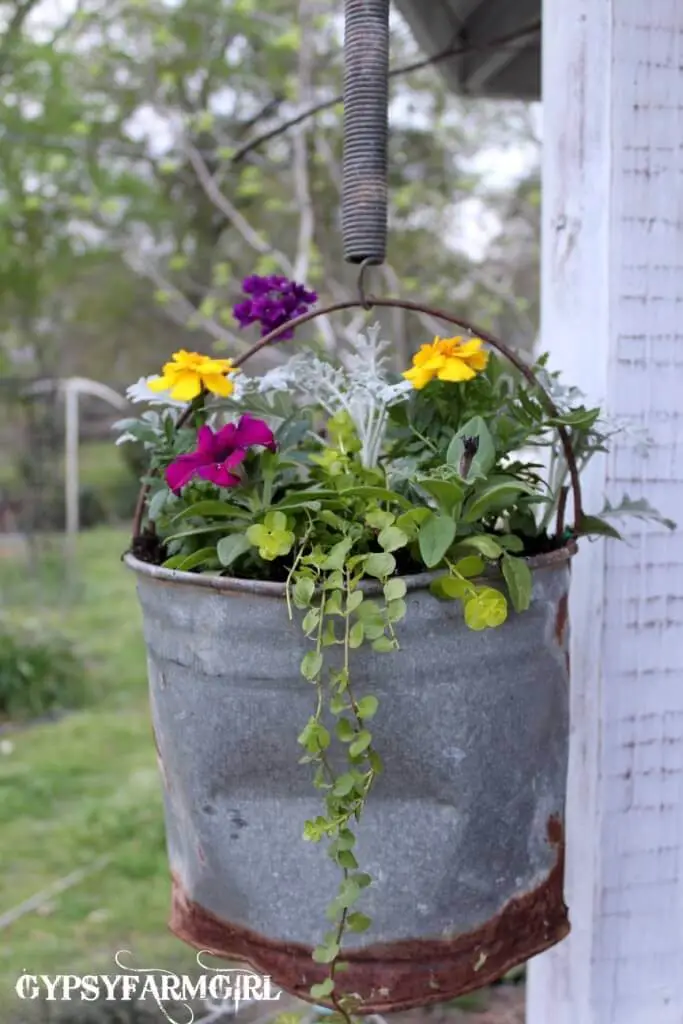
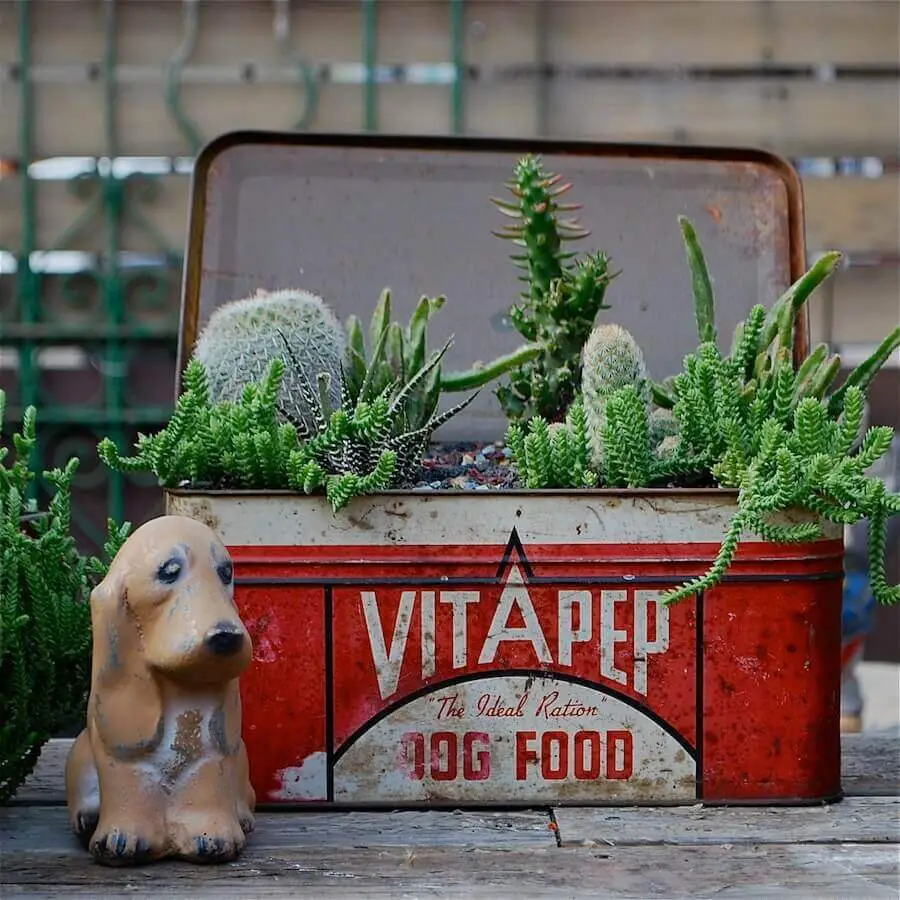
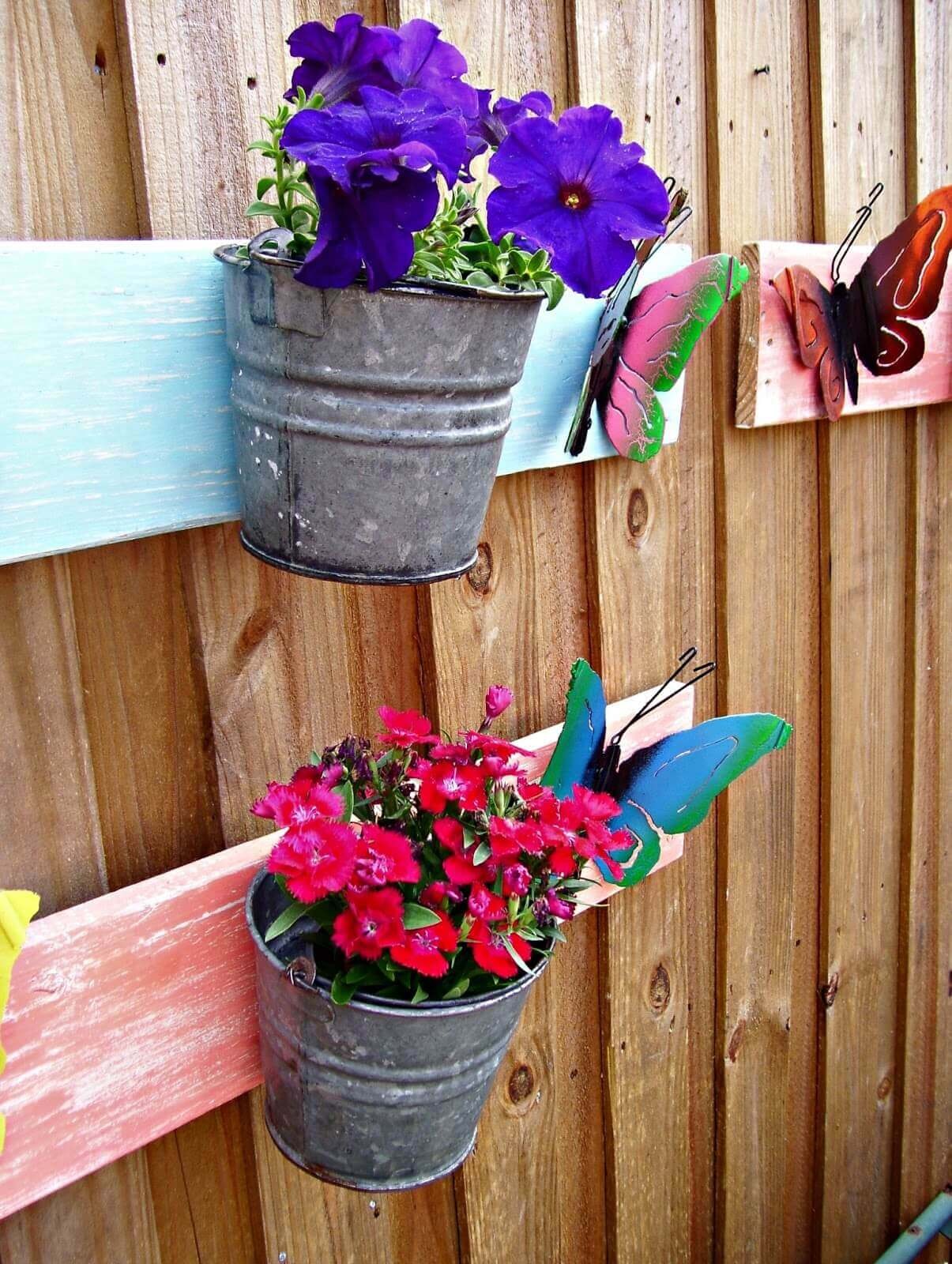
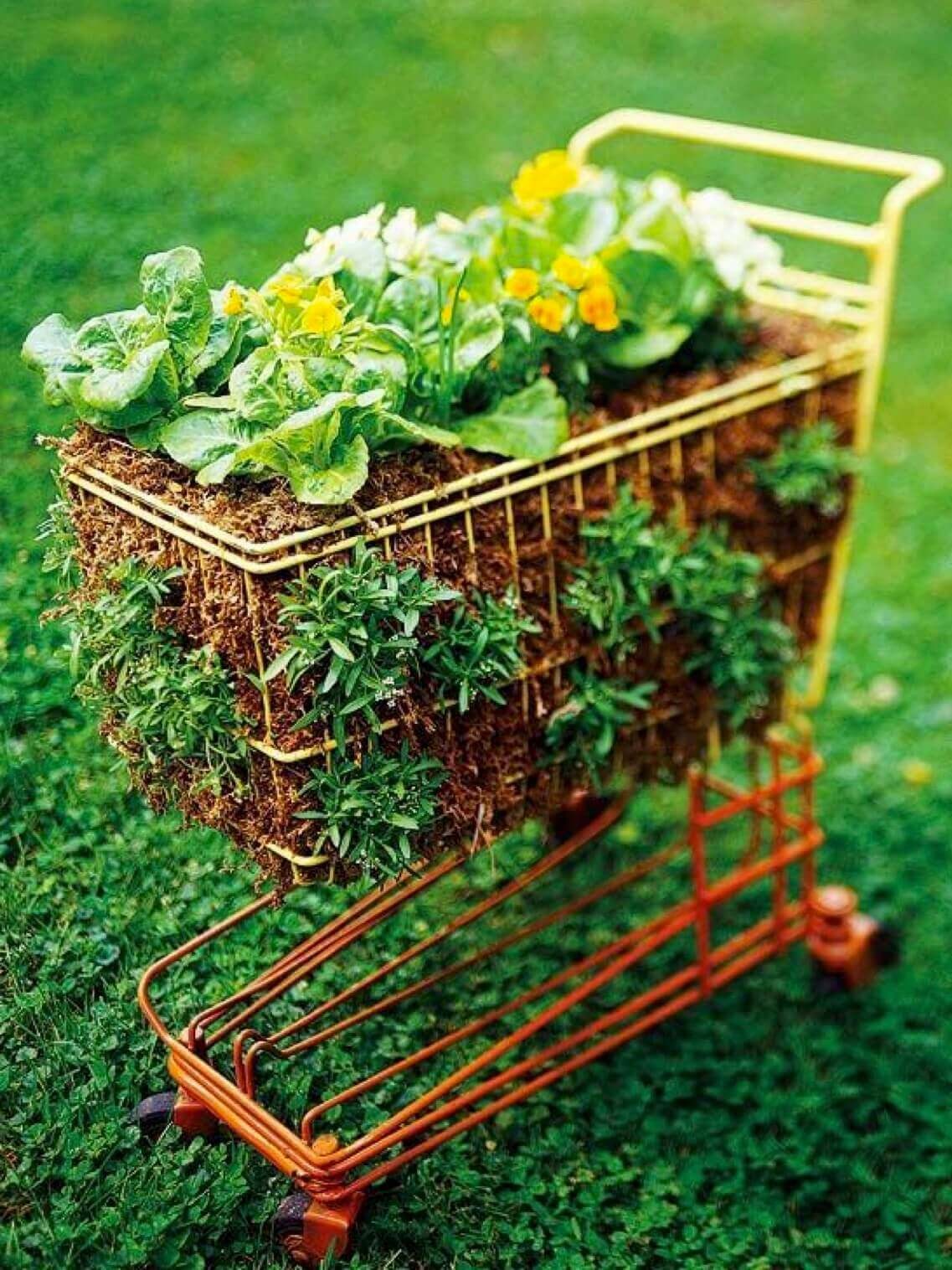
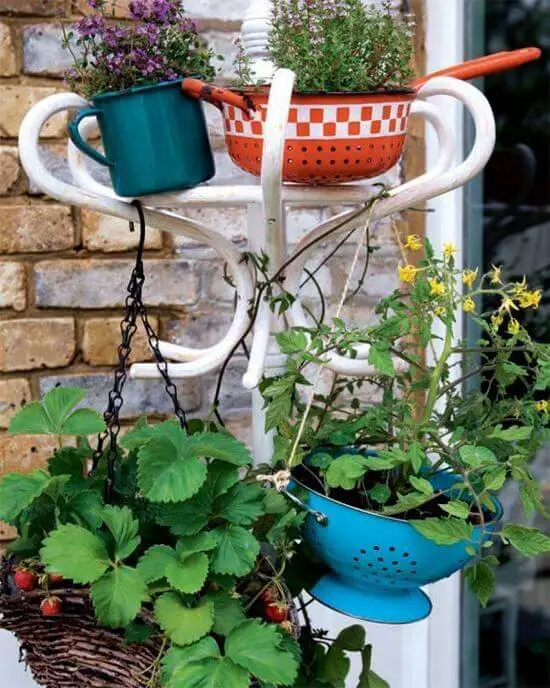
Transforming old denim pockets into wall-mounted planters is a creative way to repurpose discarded materials. The sturdy fabric and built-in pocket design of these pockets make them ideal for holding small plants or herbs, providing a space-saving and charming vertical gardening solution. To create this unique planter, simply cut out the pocket, attach it to a backing board or directly onto a wall, and insert a small container or liner to hold the soil and plants.
This DIY project not only adds a touch of rustic charm to any room but also serves as a functional display for your greenery.
Tips for Choosing Plants for Repurposed Containers
When converting containers into mini-gardens, it’s crucial to choose the right plants to ensure a lush and healthy environment. To help you make informed decisions, here are some key considerations when selecting plants for your repurposed container gardens.
Considering the Size and Depth of the Container
When selecting a repurposed container for your plants, consider the size and depth it offers. Shallow containers are ideal for plants with shallow root systems, such as succulents or herbs that don’t require extensive underground support. On the other hand, deeper containers can accommodate plants with longer roots like tomatoes or certain perennials that demand more room to spread out.
It’s crucial to ensure the container is proportional to the mature size of the plant to prevent overcrowding and allow each one enough space to flourish.
Understanding the Sunlight and Water Requirements
When selecting plants for your repurposed containers, it’s essential to consider the specific sunlight and water needs of each species. The amount of sunlight an area receives plays a significant role in determining which plants will thrive. For instance, plants that demand full sun should be positioned in locations that receive at least six hours of direct sunlight daily, whereas shade-loving varieties require more sheltered environments.
Additionally, it’s crucial to group plants with similar water requirements together to simplify the watering process and prevent over- or under-watering.
Companion Planting in Larger Containers
When it comes to repurposed containers, think beyond a single plant. Companion planting allows you to pair plants that benefit from each other’s presence. Some will naturally deter pests, while others can enhance growth or flavor. This approach also enables you to make the most of your space by combining plants with varying growth habits – like tall plants alongside ground covers, or climbers entwined with bushy ones.
As you plan your container garden, consider factors like plant size and depth, ensuring each root system has room to thrive. Don’t forget about sunlight and water needs; match plants to their ideal conditions for optimal health. Finally, think about how companion planting can amplify the positive effects of synergy within your garden, maximizing the potential of every plant.
Enhancing Your Repurposed Container Garden
Transforming a repurposed container garden into a stunning oasis can be a truly fulfilling endeavor. To take it to the next level, consider incorporating these thoughtful touches that will not only boost its visual appeal but also optimize its performance.
Adding DIY Drip Irrigation Systems
A well-designed DIY drip irrigation system can be a game-changer for container gardening enthusiasts, providing plants with the perfect amount of hydration while minimizing waste. By leveraging a few simple components – including a hose, timer, and drip emitters or soaker hoses – you can create an efficient watering setup that not only conserves precious water resources but also caters to busy gardeners by automating the process.
Simply arrange the hoses to navigate through your containers, set the timer to deliver optimal daily waterings during early morning or late afternoon hours, and let your plants thrive without the hassle of constant watering checks.
Decorative Touches to Personalize Your Garden
Transforming your garden into an extension of yourself is all about adding thoughtful decorative elements. A simple yet effective way to do this is by personalizing your containers, whether through vibrant paint jobs or carefully selected decorative stones. Labeling each plant adds an extra layer of personality and makes for a great conversation starter. Moreover, incorporating unique art pieces like wind chimes or sculptures injects movement and visual interest into the space.
The end result is a garden that not only looks stunning but also feels tailored to your distinct taste.
Using Mulch to Retain Moisture and Suppress Weeds
In any garden setting, including repurposed containers, mulch plays a crucial role in maintaining soil health and reducing maintenance tasks. By retaining moisture in the soil, mulch minimizes the need for frequent watering, while also preventing weeds from gaining a foothold. Additionally, organic mulches like straw, wood chips, or leaves not only suppress weed growth but also release essential nutrients as they decompose into the soil.
When incorporating mulch into your gardening routine, apply a layer around your plants, taking care to leave the base of the plant uncovered to allow for proper air circulation and sunlight penetration.
Maintenance and Care for Repurposed Container Gardens
To ensure a flourishing repurposed container garden, it’s crucial to prioritize regular upkeep and attention. By adopting these simple yet effective habits, you’ll be able to keep your plants thriving and your garden looking its best. Start by setting aside time each week to tend to your container garden, whether that means watering, pruning, or simply checking in on their progress.
Regular Watering and Fertilization
In the world of gardening, watering and fertilization are two crucial elements that require attention, especially when it comes to container gardens. The limited soil capacity in containers can lead to rapid depletion of nutrients, making regular checks on moisture levels a must. Start by monitoring the top inch of soil daily, providing water only when it feels dry. Keep in mind that different plants have unique watering needs, so be prepared to adjust your approach accordingly.
In addition to watering, fertilization is vital for container gardens. A balanced, all-purpose fertilizer can help replenish nutrients and promote healthy growth. Be sure to follow the recommended frequency and dosage to avoid over- or under-fertilizing your plants.
Monitoring for Pests and Diseases
In a garden setting, pests and diseases can swiftly gain traction if left unchecked. To mitigate this risk, it’s essential to conduct regular plant inspections for telltale signs of trouble, such as aberrant leaf coloration, stunted growth, or visible insect infestations. Timely detection is crucial for implementing effective management strategies.
Once issues are identified, utilize natural or recommended treatments to address the problems and remove any severely affected plants to prevent the spread to healthy ones.
Seasonal Care and Overwintering Strategies
As the seasons transition, it’s essential to adapt your container garden’s care routine. In colder months, you may need to relocate sensitive plants indoors or provide protective measures like mulch or frost cloths to ensure their survival. This process, known as overwintering, is vital for perennials and tender plants that can’t tolerate freezing temperatures.
For those in warmer climates, the key to thriving container gardens lies in adjusting plant positions to accommodate changing sun patterns and increasing watering frequency during hot summer months. By acknowledging these seasonal changes, you’ll be able to maintain a healthy, flourishing garden that’s well-equipped to face whatever the weather brings.
In terms of maintenance tasks, several key areas require attention:Watering and Fertilizing: This duo is crucial for maintaining plant health and ensuring nutrient availability. Pest and Disease Control: It’s essential to protect your plants from damage and stress caused by pests or diseases. Seasonal Adjustments: By adapting your care routine to changing environmental conditions, you’ll be able to optimize your container garden’s performance and reap the rewards of a thriving, vibrant space.
Conclusion
As you venture into the world of repurposed garden container ideas on a budget, you’re not only getting creative with items destined for the landfill, but also fostering a sense of sustainability and resourcefulness. By breathing new life into discarded objects, you’re contributing to a healthier planet, reducing waste, and curating a unique garden space that reflects your personal style.
The aesthetic appeal of repurposed containers is unparalleled, offering a one-of-a-kind charm that store-bought alternatives can’t match.
As you tend to your container garden, you’ll be rewarded with a lush and thriving outdoor oasis. Remember, the key to success lies in selecting the right plants for each container, providing them with the care they need, and infusing personal touches that reflect your unique flair.
As you continue to nurture your garden, allow it to serve as a testament to your commitment to environmental stewardship and your passion for gardening. May your repurposed containers burst forth with life, bringing joy and serenity to your daily routine. Continue cultivating your green thumb, and revel in the endless possibilities that repurposing offers to both novice and seasoned gardeners alike.
Resources
For a creative and informative journey into the world of repurposed container gardening, there’s no shortage of avenues to explore. Not only can you tap into a wealth of online resources, but also engage with fellow enthusiasts and enthusiasts-in-the-making, all united by their passion for transforming ordinary containers into extraordinary gardens.
Books and Websites for Further Reading on Repurposed Gardening
Beyond the realm of practical experience lies a vast wealth of knowledge on repurposed gardening, waiting to be tapped into. The world wide web is home to numerous thought-provoking websites that delve into the intricacies of sustainable gardening, with fine examples like Fine Gardening offering comprehensive courses and an abundance of information to aid in the design of eco-friendly gardens.
For those seeking a more curated approach, the Smiling Gardener’s compilation of the 50 best organic gardening books is a treasure trove of knowledge, covering topics as diverse as soil health and garden aesthetics.
Local Workshops or Community Programs on Sustainable Gardening
Immerse yourself in local initiatives by attending workshops, programs, or events at nurseries, garden clubs, or community centers focused on sustainable gardening practices. These hands-on learning experiences not only educate but also provide opportunities to connect with like-minded individuals.
Beyond these local resources, organizations such as the Institute for Local Self-Reliance offer valuable information on community composting and other environmentally conscious methods, serving as a catalyst for your own sustainable gardening journey.
Online Forums and Social Media Groups for Idea Exchange
Engagement with online forums and social media groups dedicated to gardening can be a highly rewarding experience, allowing individuals to share knowledge, seek advice, and draw inspiration from like-minded enthusiasts. One such platform, Permies. com, serves as a hub for discussions on a diverse range of topics, including innovative gardening techniques that cater to the needs of gardeners with physical limitations.
By participating in these online communities, individuals can expect to find support, motivation, and a wealth of creative ideas to inform their own gardening endeavors.


